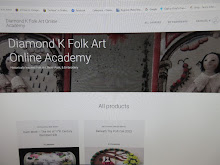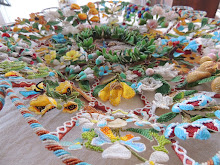1830-50 Lady's Chemise, 111.2000.42
Today's Museum Monday lucky number is 111! I love this piece....which I will probably say on all my Museum Monday posts...because, hello, every piece I have is special for some reason or another...but this one, while from afar it looks just like another plain boring white chemise...up close, its marvelous. This chemise came with a hand written note attached that reads "S. A. Dockums, her work". From outward appearance, it looks to date c1850 to 1860s, actually very similar in cut to this one at the Met Museum..tho theirs is of coarse presented on a better form than mine. Family provenance dates this piece to the 1830's, and we all know how horribly mixed up family provenances can be....but upon inspecting the details, I really do think it is that early....so lets look at all those great details!First let me report that their is not a single raw edge on this piece, anywhere. It has been entirely hand stitched with extremely even, tiny stitches,~ very skillfully executed. The entire chemise is constructed of just 5 pieces of cotton. The top yoke that has been embroidered by hand, 2 embroidered single piece sleeves, and two body panels, (which I refer to as skirting). The yoke is embroidered with cutwork the entire way around, with center front 3 button closure. (Center button is missing)
Here you can see that the design of the embroidery incorporated the center button to be the center of the cutwork flower when closed. The tiny gathers of the skirting panels up into the yoke can also be appreciated here
The front placket has a particularly long opening, which may indicate that this was used for nursing.
The yoke is shaped into wonderful points over the shoulders
Very tight fitting short cap sleeves~ see how they are shaped full at the bottom, but gathered up at the top? This is a very common practice to tie up childrens dress sleeves(both boys and girls) in the 1850s to get this shape~ they just threaded a ribbon thru the shoulder and top of the sleeve and tied them up. Looking at the top of the sleeve, one would definitely think 1850 decade for a date.Its the shape of the bottom of the sleeves that is what is exciting, and dare I say innovating for this seamstress at that time. The sleeve has been cut as one piece, but has the added width and shape of a stitched gusset at the bottom. The shape, but no extra seams! High fashion in the 1830s for huge gigot sleeves made wearing sleeve puffs or ruffles mandatory~ you just couldn't get the pouff without them. These were tied on over the sleeve of the chemise, so there was literally no room for added bulk in the sleeve area~ combined with the high set of the sleeve on the bodice, I would expect the underarm gusset seams to be quite uncomfortable after a few hours of wear. Cutting the sleeves as one like this, with the gusset, would still allow the extra room for moving ones arm, but eliminate some chaffing and bulk
The pretty shaped yoke & sleeves would have been embroidered first, before cutting the pieces out for construction.
The two body or skirting panels are seamed with french seams up each side. All are gathered up evenly into the yoke, all the way around.
I left this picture large, so you can appreciate the expertly placed stitches~ this is a view of the inside of one of the side seams, at the hem.
I hope you enjoyed this Museum Monday. Feel free to pick a number and leave in the comments below for a chance to be chosen for next weeks Museum Monday!
































2 comments:
Three more numbers....902 and 213 and 130. Can you guess who those belong to?? My favorite people!! :-)
LY, Mom
Oh what a treat! In my opinion, Museum Mondays is going to be a big hit - especially considering that Monday is the traditional day for museums to be closed. With this feature, I can still visit and see one special object in the collection up close...with the analysis and commentary, it's like having a personal docent. Thank you!!!
Post a Comment